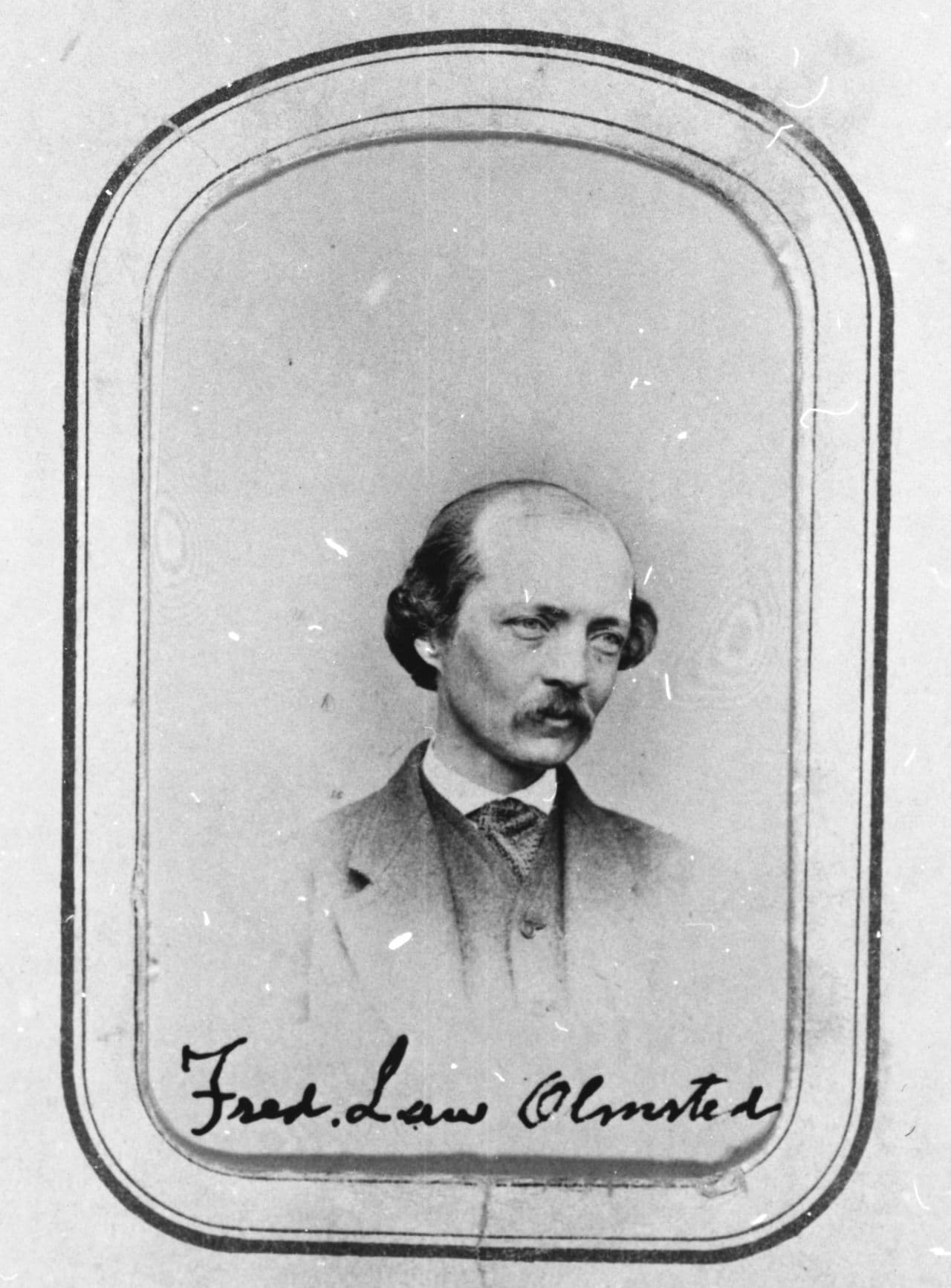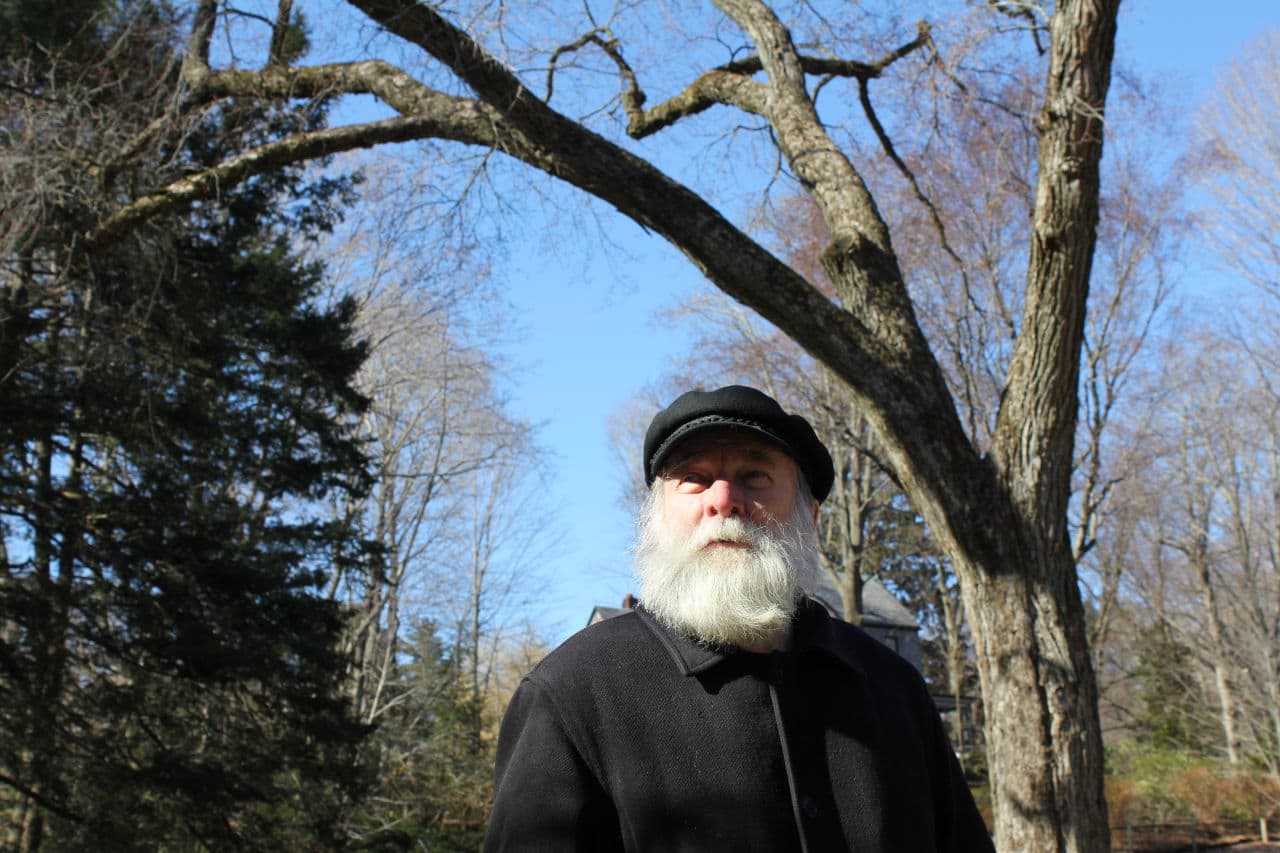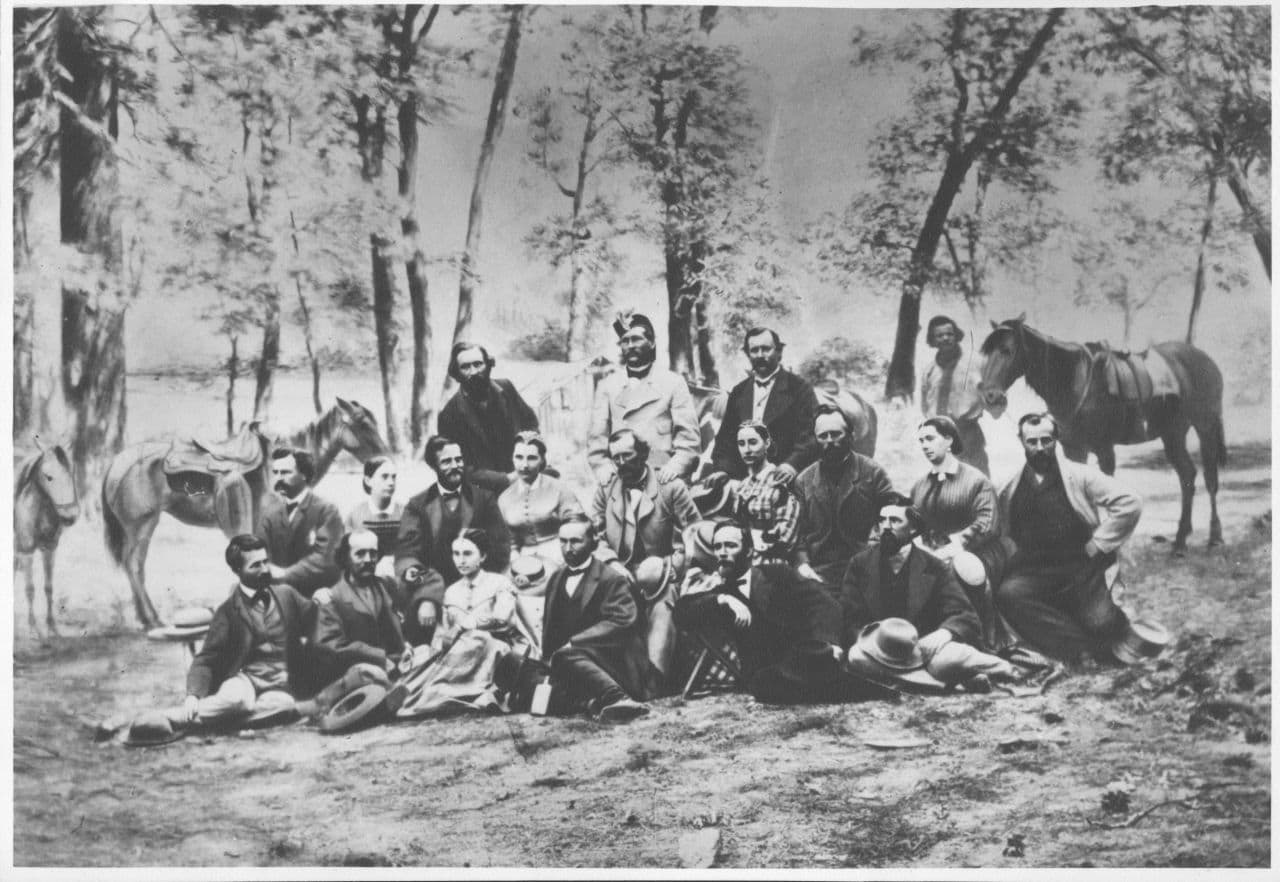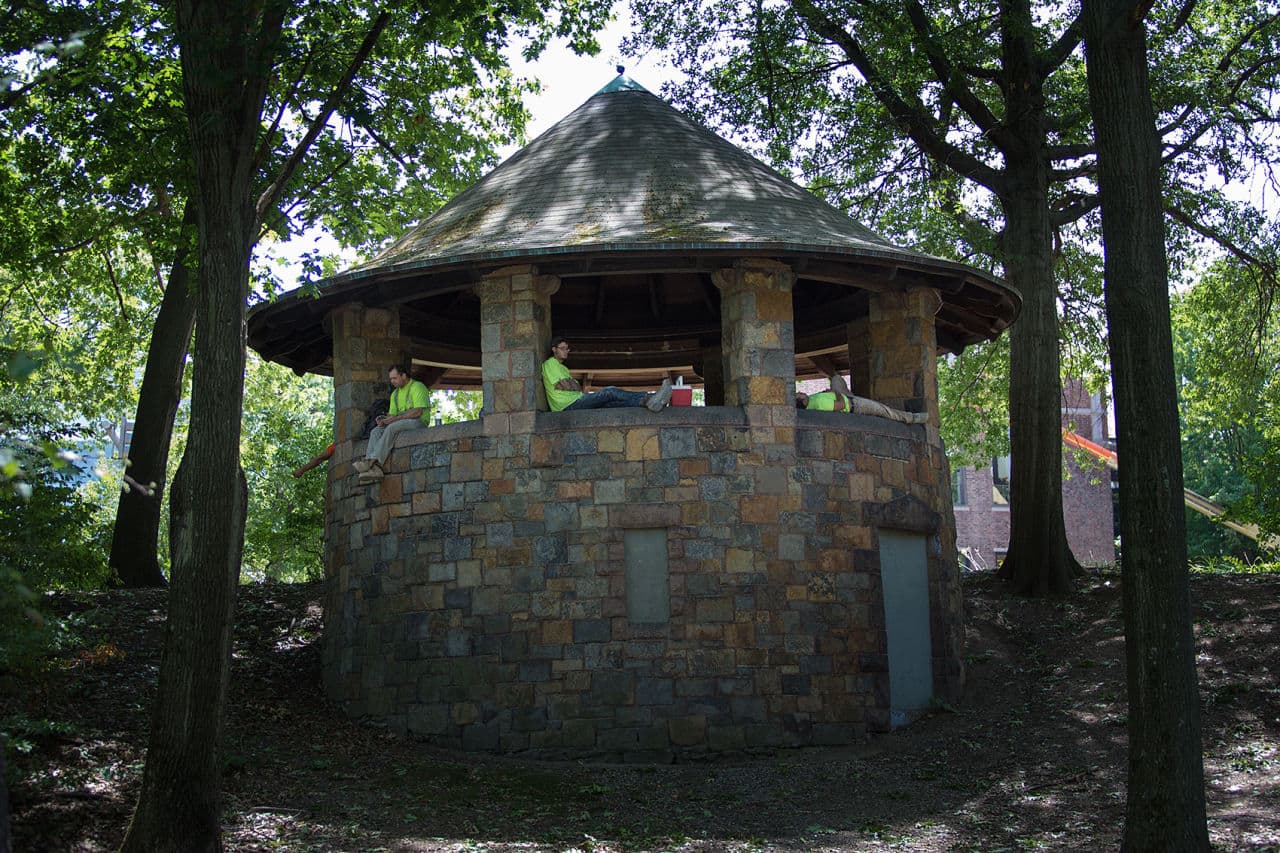Advertisement
150 Years Ago, Olmsted Released His Historic Yosemite Report

For many in the Boston area, one of the most popular stretches of green space is the series of parks that make up the Emerald Necklace, the brainchild of landscape architect Frederick Law Olmsted.

Sunday marks the 150th anniversary of the first reading of Olmsted's historic report, "Yosemite and the Mariposa Grove." It's largely credited with providing the basis for the creation of Yosemite National Park.
We recently visited the Frederick Law Olmsted National Historic Site here in Brookline to learn more about the significance of this report and Olmsted's vision for open spaces. We were joined by Gerry Wright, a Jamaica Plain activist, naturalist and something of an Olmsted historian.
WBUR last met with Wright in the same location in 2011, to pay our respects to the 200-year-old Olmsted Elm tree, which was wrought with disease, before it was cut down. In its place now grows a disease-resistant Jefferson Elm, which Wright says looks to be thriving.

Interview Highlights
On why Olmsted wrote the Yosemite report:
Olmsted wrote this report because when he was in California, he discovered Yosemite and he was overwhelmed with the beauty.
And he realized that there were some people for California who wanted to utilize this as a tourist attraction and actually run a mill there, cutting down trees, using some of the land for farms. And he felt that all the land should be preserved, so he wrote this report as the chairman of the commission which the governor of California had appointed.

On the correlation between great art and the beauty of Yosemite:
In fact, Olmsted would say, this is a magnificent piece of art, the whole Yosemite combined with the giant sequoia trees, the Mariposa Grove. And he would say that it wasn't just one scene, there were falls there, three sets of falls, that were 15 times higher than Niagara [Falls]. He would talk about the tremendous cliffs. So it wasn't one scene; it was scene, after scene, after scene that, for me, formed a symphony of nature.
On how the varied "scenes" of Boston's Emerald Necklace reflect the many vistas of Yosemite National Park:
I find that absolutely fascinating because for me, obviously this is no Yosemite, but when you look from Franklin Park down to the Fens, you have such a terrific variety. And you look at Jamaica Pond, and there you have Hellenic Hill, which we have preserved and so it's this forest. And then you get up to Franklin Park, but there was a great valley a mile long, now the golf course.
So you had all these different scenes for our own Emerald Necklace here in Boston that were so put together as a piece of art, so when you moved from one scene to another scene in Franklin Park you would come to points of vistas, where you would come out of the woods and there would be the valley before you, as if you could see forever.

This segment aired on August 7, 2015.

